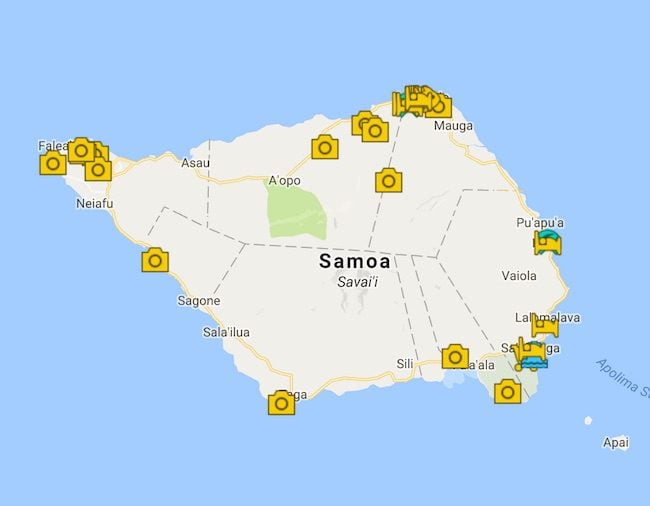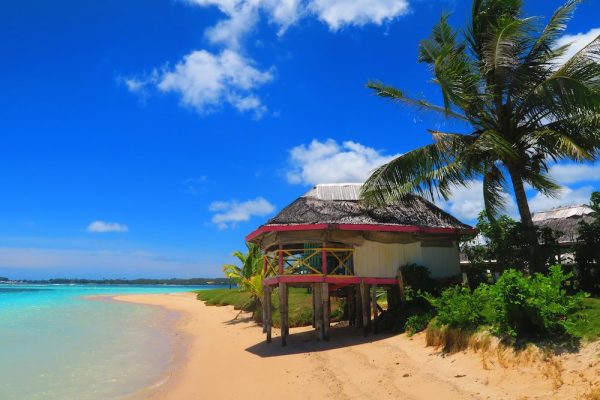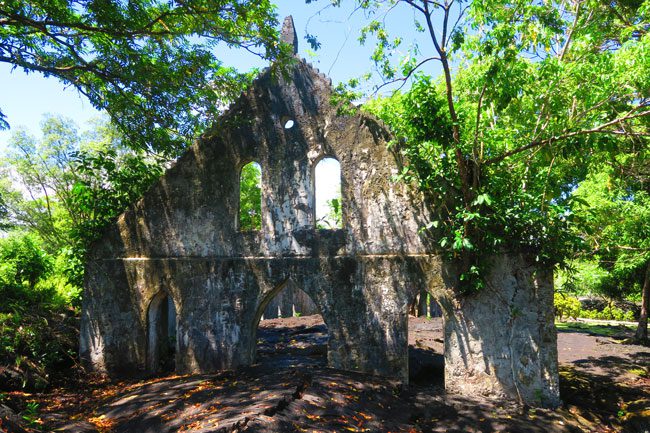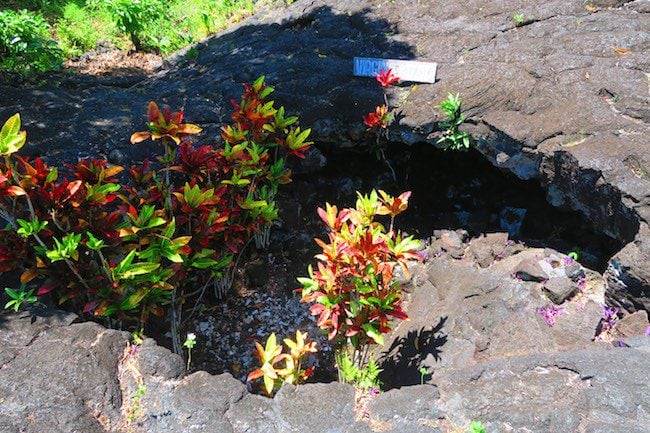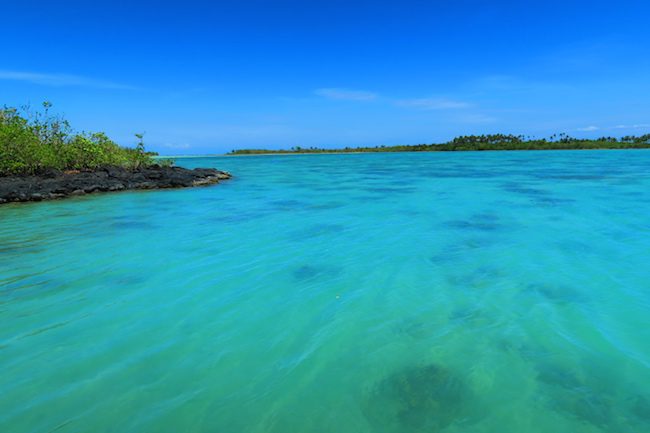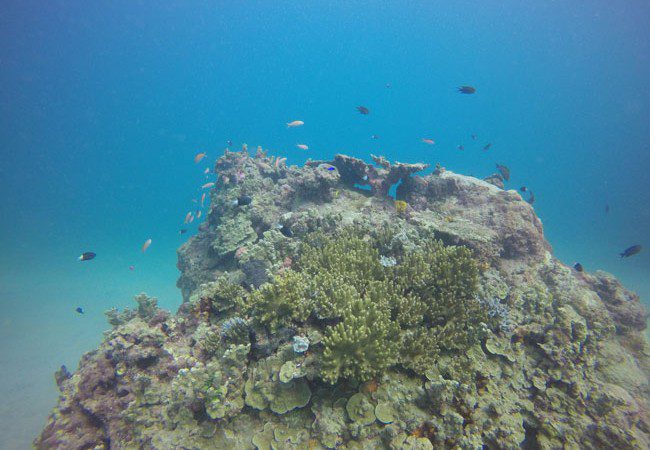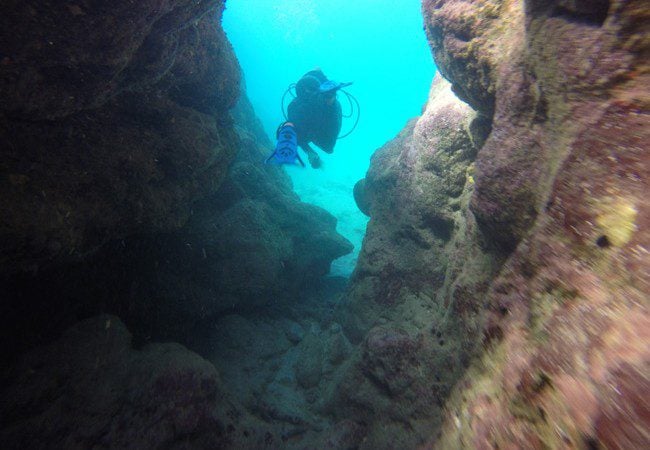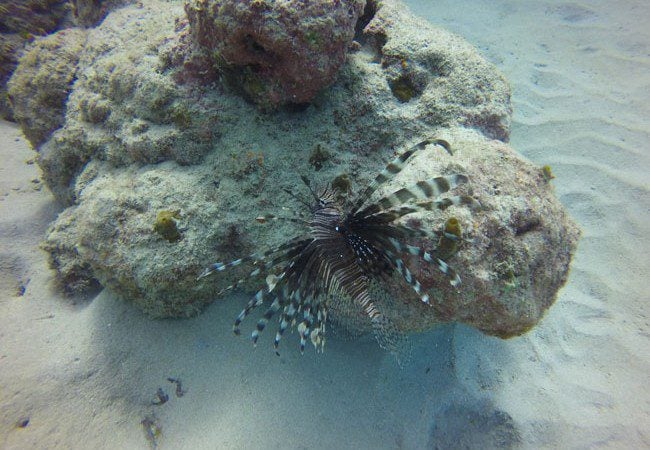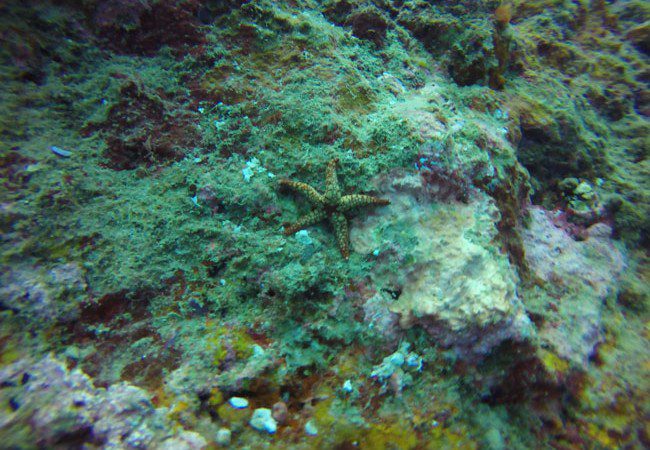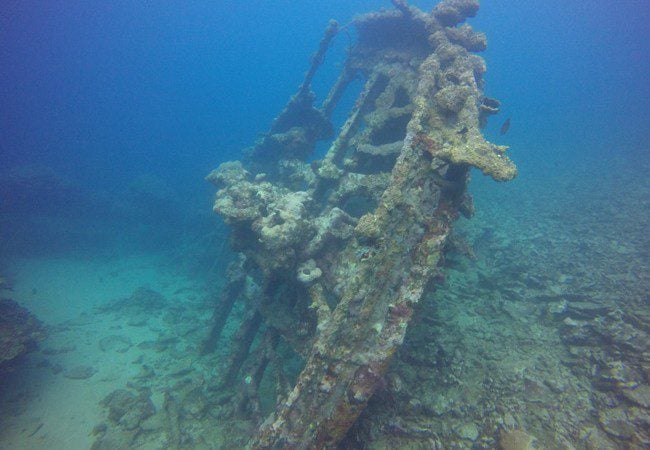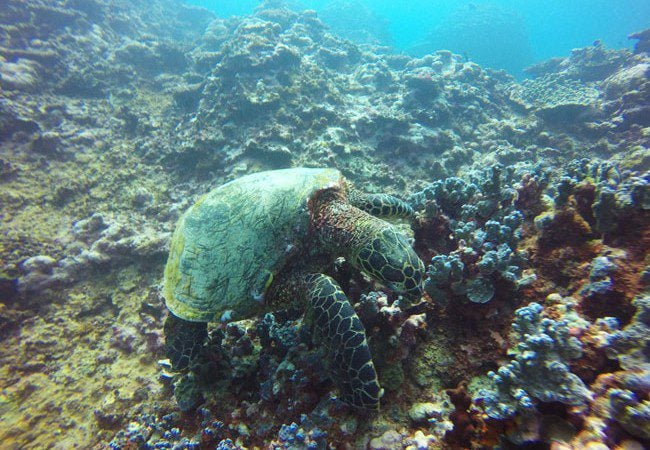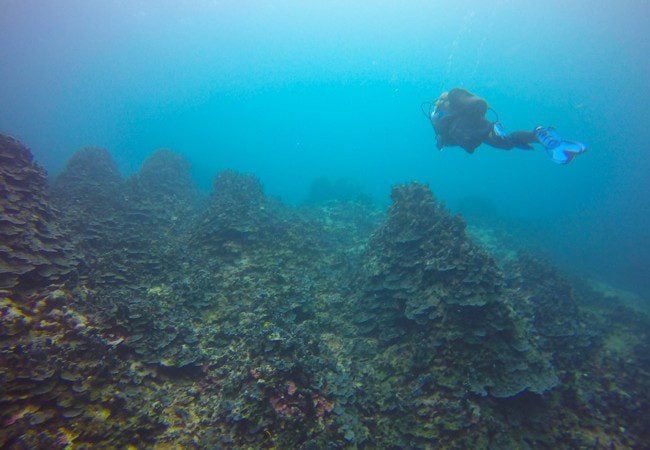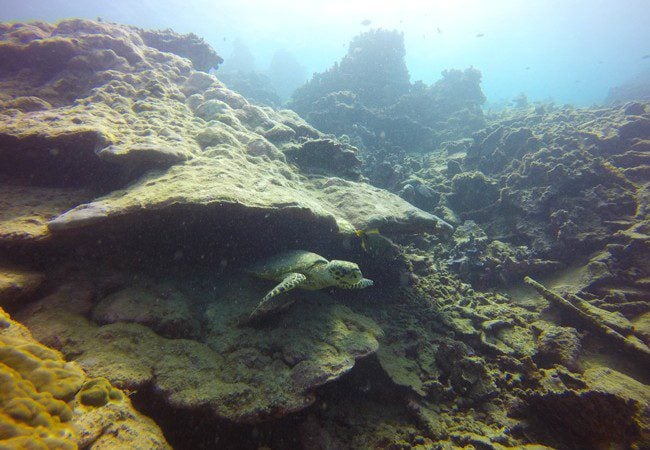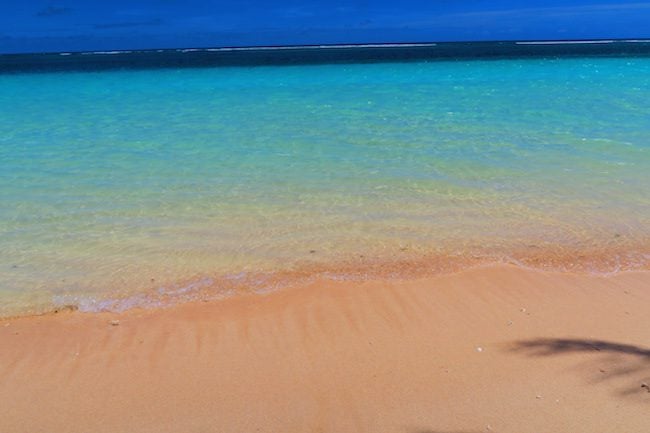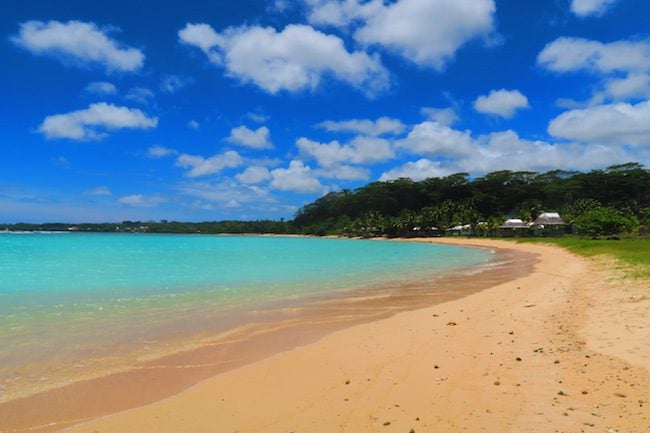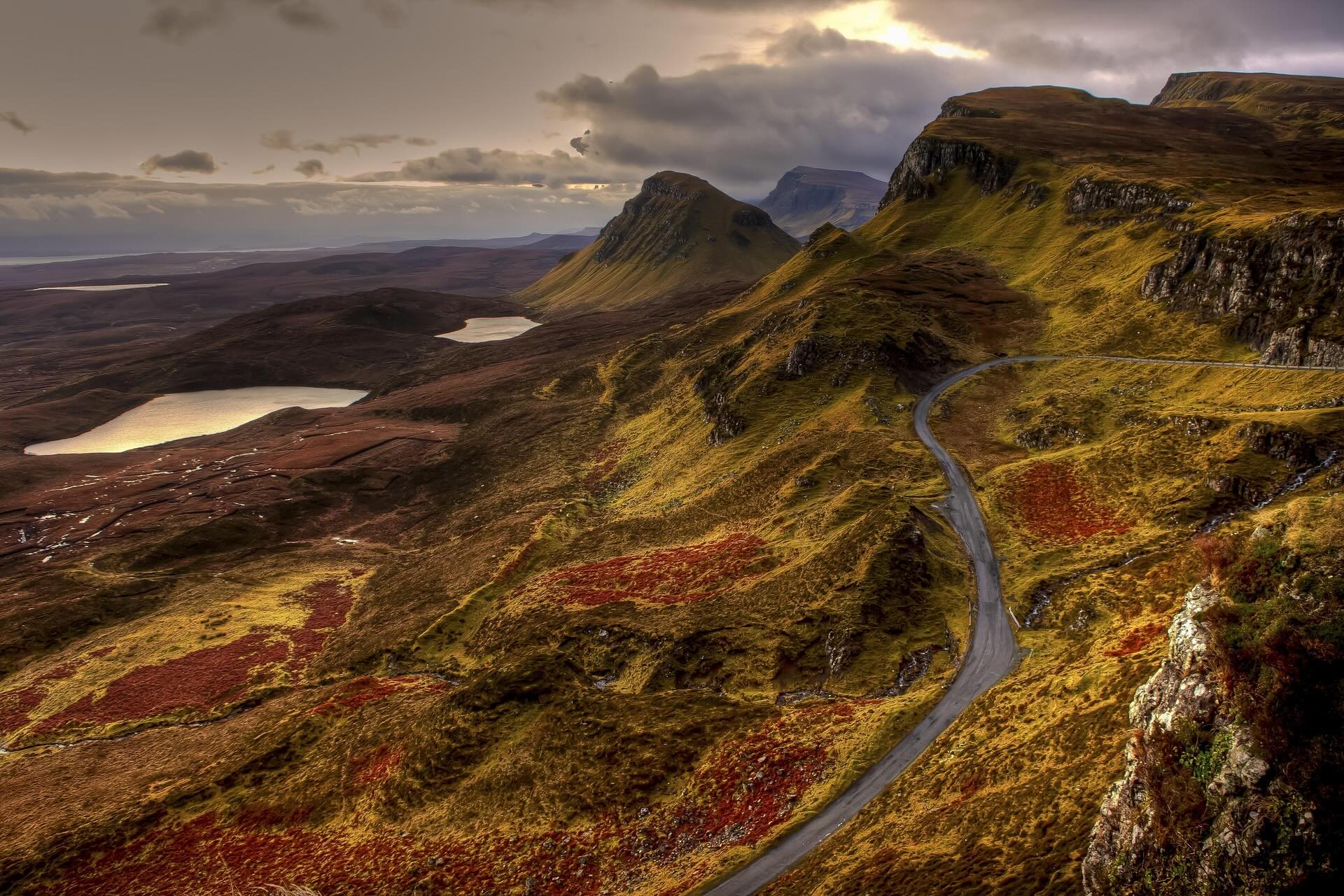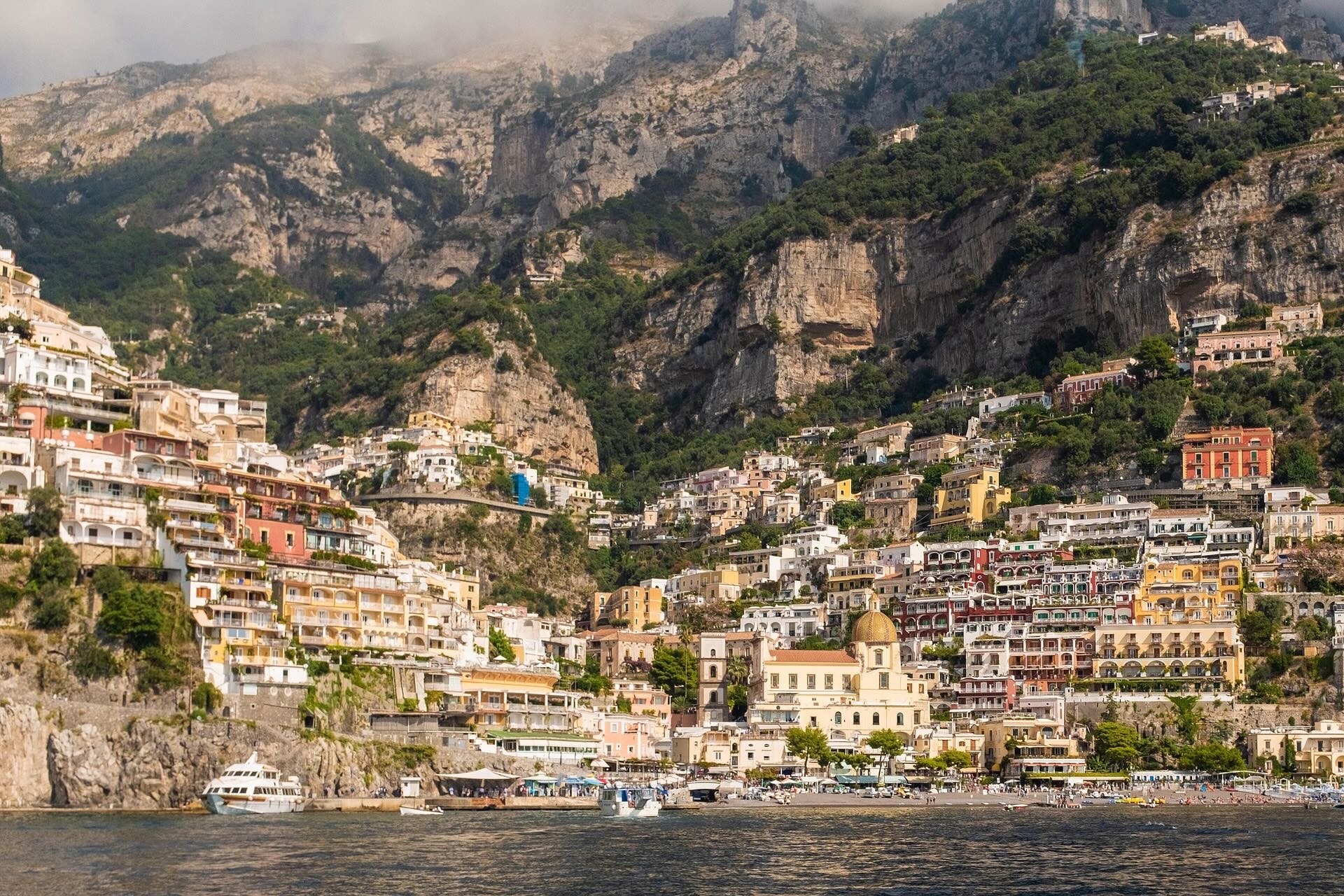Samoa Travel Guide
Savaii Travel Guide
Savaii is Samoa’s largest island, yet home to just a quarter of the already tiny Samoan population. Considered by many to be ‘the real Samoa’, Savaii is where you can seriously get off the beaten track. To explore Savaii is to travel back in time. As you drive its rural roads, it’s not uncommon to pass men bearing heavy loads of coconuts on either shoulder, children happily marching to school and families wrapping the day with a local round of kilikiti next to their ancestor’s graves in the front yard. Savaii is wild, scarred by hundreds of craters covered in thick forest, and decorated with slivers of white sand. In this section of the Samoa Travel Guide, we’ll cover the big island’s highlights.
Additional Savaii Resources
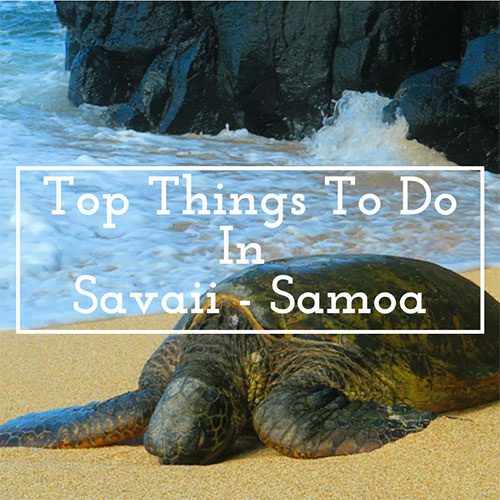
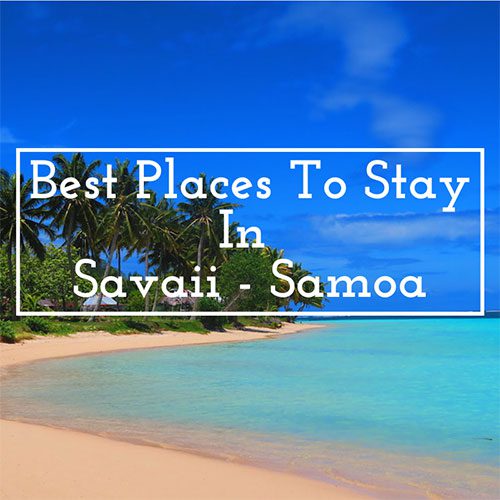
Savaii Travel Tips
- Recommended Reading: Roadtripping In Savaii – a personal account of my visit to Savaii Island
- Getting to Savaii from Upolu by boat: catch the ferry from Mulifanua on the Upolu side for the 22km journey to Salelologa (ferry terminal reachable by bus). There are two ferries in operation: a comfortable air-conditioned passenger-oriented ferry (~1-hour crossing), and a vehicle transport-oriented ferry with a small outdoor seating area (~2-hour crossing). Check the Savaii ferry schedule, noting the two Sunday departures instead of the usual five. It is possible to transport a rental car from Upolu to Savaii but not vice versa. If you’re planning on switching islands over the weekend, it is advised to book your ticket in advance.
- Getting to Savaii from Upolu by air: after years of inactivity, the airline between Upolu and Savaii was recently re-established. Check out Samoa Airways’ domestic flights between Upolu and Savaii
- Getting to Manono and Apolima: ferries also connect Savaii and Upolu with the small islands of Manono and Apolima.
- Getting around Savaii by car: I highly recommend renting a car for at least two days to properly explore the island, as without any stops it takes about 90 minutes to drive the length of the south or north coast (see ‘Samoa travel tips’ section). There is just one main road circling the island so you will not get lost. Gas stations in Savaii are located in Salelologa and Manase (and maybe in a couple of the remote villages). A regular 2WD will do just fine, but if you want to head up to the Matavanu Crater, you’ll need at the very least a high 2WD. Don’t leave any valuables in the car and in general, it’s best to give an empty interior appearance when parking.
- Getting around Savaii by bus: though the central bus station is by the market and shopping complex at the edge of Salelologa, there will always be a bus waiting for you at the ferry terminal in Salelologa. Busses pretty much cater to the ferry schedule. Be sure to inquire with your hosts so you don’t miss the ferry back to Upolu.
- Fees and road signs: there aren’t always signs to all the highlights I’ll mention here (it’s OK, just ask the locals). Be prepared to pay entrance fees everywhere. If asked for more than T20, attempt to (very) politely negotiate the asked price as in Savaii, it’s not set in stone (though bargaining is not well taken in Samoa).
- ATMs in Savaii: both Salelologa and Manase have ATM’s but I would advise to not count on the Manase ATM to always have enough cash.
- Food in Savaii: every village has small grocery shops selling a dull selection of packaged foods. For fruits and vegetables, stock up in the Salelologa market.
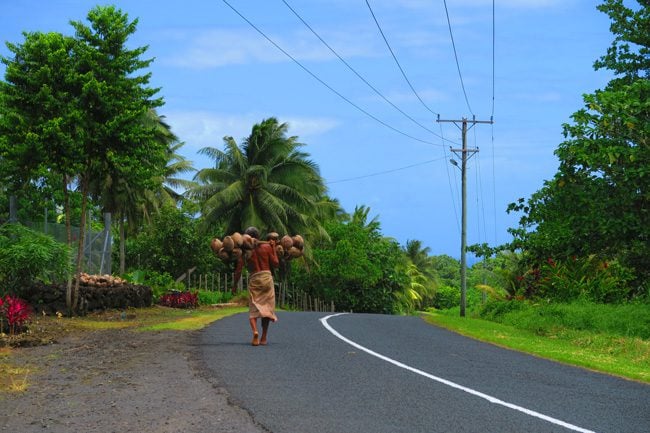
Savaii Travel Guide Map
Click on the image to open in Google Maps. The map features all the places mentioned in this section of the Samoa Travel Guide:
Where To Stay In Savaii Island
Savaii is a huge island so even if you do have a car, it does matter where you base yourself at. Nearly all visitors base themselves in Salelologa, Lano Beach, or Manase. Salelologa is the main town in Savaii, with a handful of simple resorts and hotels but no memorable highlights. Lano Beach is a lovely stretch of sand that though not very large, is home to a few popular beach fales. Manase is by far the most popular spot on the island, for backpackers, families, groups, and luxury travelers. Here are a number of personally tested recommended accommodations in Savaii Island from all three locations.
Things To Do And Places To See In Savaii
Let’s see what Samoa’s largest island has to offer.
Salelologa
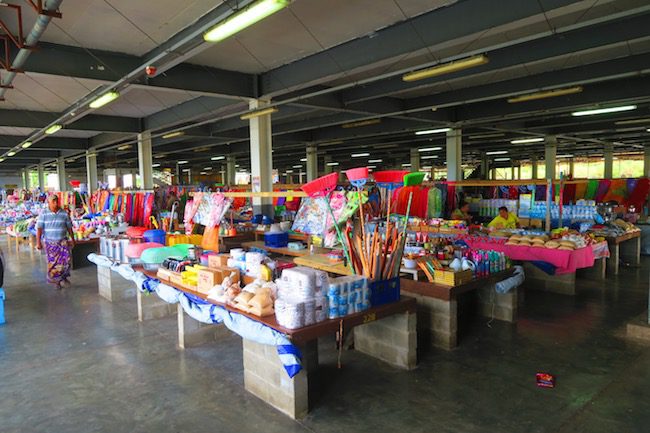
The only ‘town’ in Savaii, there’s not much to do in Salelologa other than using its facilities such as car rental, ATM, gas station, shops, market, ferry terminal, internet cafe, etc. I personally spent two nights in Salelologa because I had eight nights in Savaii and it was convenient for me to stay here, figure out my plans, and explore the nearby south coast to reduce driving times. If you’ll want to connect to wifi hotspots with your laptop (mobile data works as well), there’s a Xoom internet cafe in town. Just look for the yellow air-conditioned building. You can get online but also buy Lavaspot credit in denominations not sold by individual hotspot owners (2hrs = T25, 5hrs = T40, 10hrs = T75 though prices subject to change).
Salelologa does have a large market. I found it to be a bit dodgy and not that frequented by tourists. Maybe that explains the weird looks I got. Locals were shooting pool while others were buying anything from coffee to cleaning supplies. The market is adjacent to a shopping complex that also houses a proper supermarket.
Savaii South Coast
The South Coast of Savaii is its wildest, where ancient lava fields are smashed by ocean waves and where Samoan legends are still alive and kicking.
Mount Tafua Crater
Part of the Tafua Peninsula Rainforest Preserve, I was a bit disappointed with the Tafua Crater and wouldn’t recommend this stop. If you want to see for yourself, look for the sign opposite the former Savaii airport and follow the road towards the coast. At some point, you’ll reach the metal gate where you pay the T10 fee. I tried finding the crater on my own but ended up driving in a big circle. So the next time around, one of the locals who collected the fee took me on the unmarked trail to the viewing area (a 10-minute hike). There’s actually not much to see up here since the crater is overgrown with tropical vegetation.
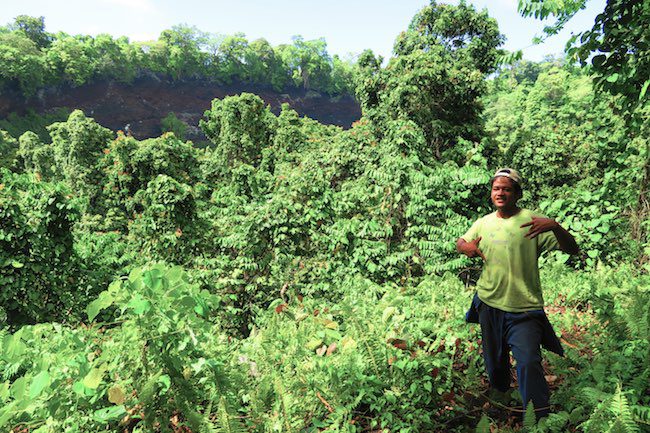
Afu Aau Falls
Come to this dreamy spot on a weekday, and you’ll have it all to yourself. The Afu Aau Falls (also known as Ole Moe Falls) are signposted just before an iron bridge that you can’t miss. Pay the 5T entrance fee to the family manning the fale and continue driving to the small car park. A five-minute walk will then bring you to the falls, plunging from the rainforest into a deep pool that is so refreshing. If you’re here on your own, it’ll feel as if you’re stepping into some kind of movie set about paradise. Listen to the birds singing, the water gently trickling down from the moss-covered rocks and maybe even stop for a quick picnic. For those who want to understand Savaii’s unique geology, the sign back in the car park makes for an interesting read.

From the fale back in the entrance, you can ask the locals if they can take you to the Pulemelei Mound. It’s a tricky hike through the thick rainforest and I was quoted T50 so I opted out.
South Coast Road
The stretch of coastal road from the Afu Aau Falls to the Alofaaga Blowholes is the most scenic in Samoa. The sections which cling to the ocean, offer dramatic views of sea smashed volcanic cliffs, weird rock formations carved by the water and palm trees that somehow manage to survive the battering winds.
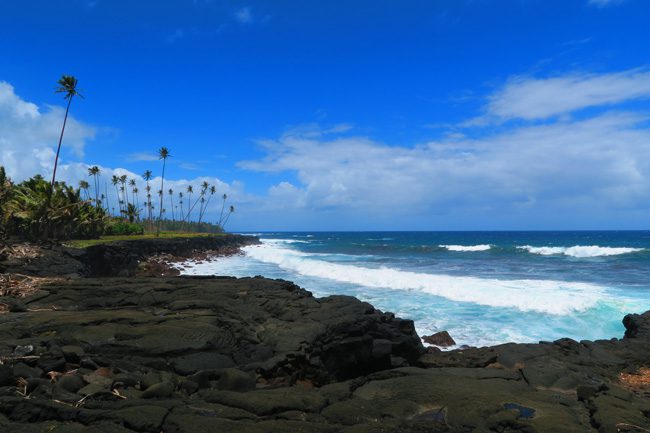
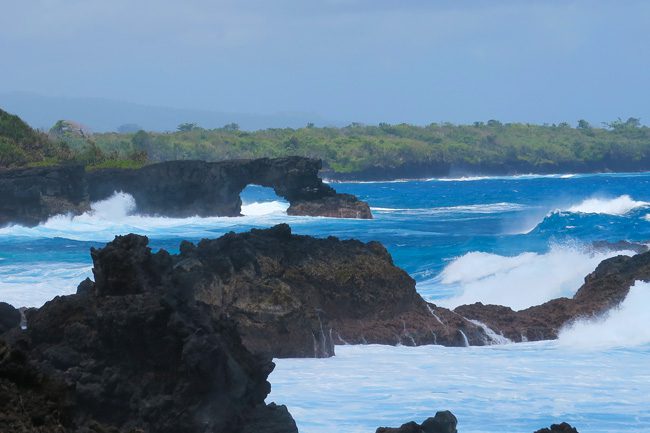
Alofaaga Blowholes
Everyone loves visiting the Alofaaga Blowholes, one of Savaii’s top highlights. First off, the scenery out here is incredibly wild, bringing you so close to the edges of cliffs battered by massive waves. But the real stars out here are the blowholes. As the swell comes in, water enters ancient underwater lava tubes, quickly rising in the air in spectacular fashion. If you get here when the ocean is calm, you’ll still get to witness the show so not to worry.

To get here, look for the easy-to-miss sign off the main road and continue along the dirt road. Pay the T5 entrance fee at the fale and continue driving to the car park. Keep in mind three things: (1) if you park the car close to the fales by the blowhole, you will be charged extra (there’s a free car park just before) and (2) there will usually be local tossing coconuts into the blowholes which make for an even more exciting show. However, whether you asked for this or not, you will be charged T20! So it’s best to just let the guy know in advance you are NOT interested. (3) If you’re lucky, there will be a friendly villager selling ice-cold coconuts on your way out.
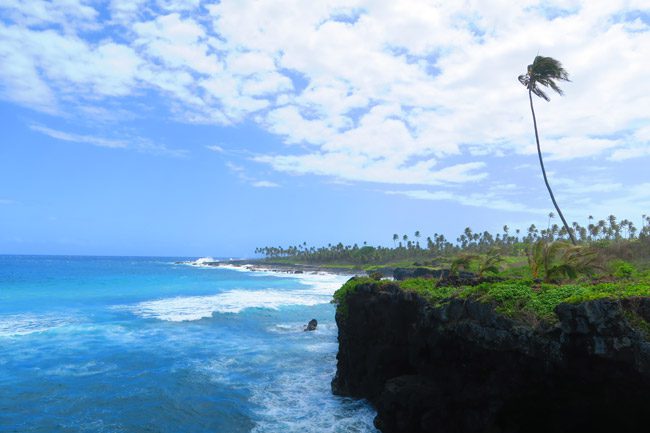

Lovers Leap
Not of the romantic kind, local legend tells of a blind mother and her daughter who plunged into the ocean from this spot. The mother couldn’t bear the lack of attention she and her daughter were getting during mealtime and decided to take action. Upon hitting the water, the mother morphed into a sea turtle and her daughter into a shark. This might explain the good chances of spotting sharks and turtles from this panoramic spot (T2 entrance fee).
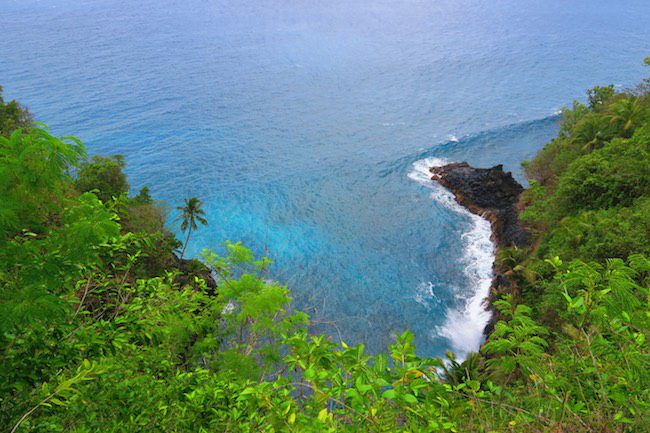
Cape Mulinuu
Part of the sacred Falealupo Peninsula, this is not only an area of significant spiritual importance to Samoans but also one of the weirdest places I visited in Samoa. Cape Mulinuu is on the southern end of the Falealupo Peninsula and we’ll cover the northern side a bit later on. Before conversion to Christianity, locals believed the westernmost point in Samoa was a gateway for the soul to the afterlife. Far removed from any major town, villagers out here are very simple people, hardly speaking English and without full-time jobs for the most part.
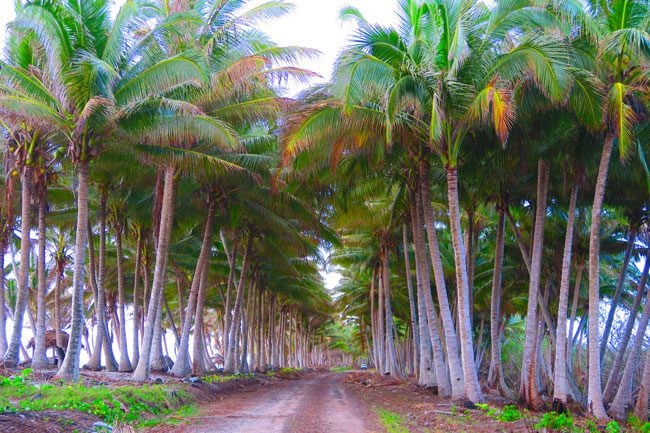
The sealed road turns into dirt and you just need to keep driving until you see a small beach fale at the end of a large coconut plantation. Pay the T10 fee and you can now visit all the cape’s sites. Ask the locals to take you into the rainforest for the quick hike to the star mound, Vaatausili Cave, and the Blood Well (Via Sua Toto). These spots were used by ancient Samoans for religious ceremonies and by warriors to bury enemies.
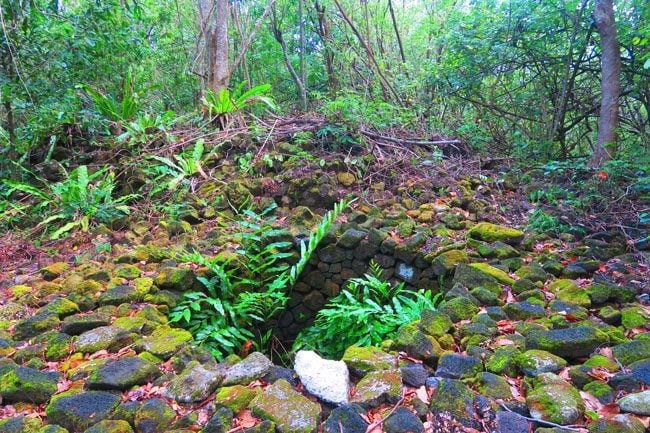
Back at the fale, this is the best place in Samoa to watch the sunset. It’s also one of the reasons why Samoans believed this was the gateway to the afterlife. In preparation for sunset, go for a swim in the tidal pool or just watch the fish play around in the ultra-clear shallow waters. I personally opted out of waiting for the sunset as it was a bit cloudy and I didn’t feel like driving back to Salelologa in the dark.
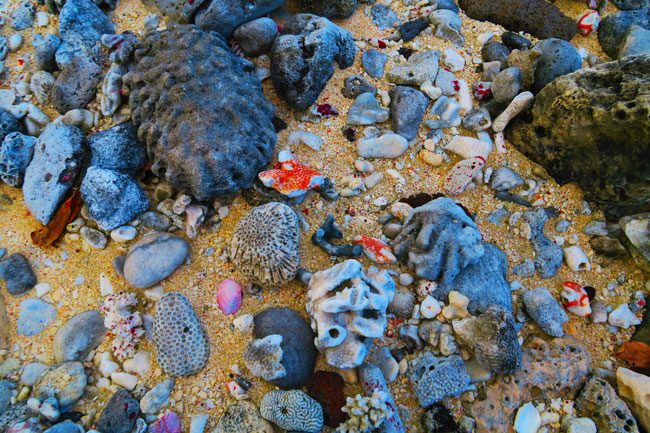
Note that you can continue from here and explore the northern section of the peninsula, or just leave it for the day when you’ll explore the north coast of Savaii (like I did).
Savaii East Coast
As you leave the ‘metro area’ of Salelologa, you’ll start to see the real Savaii. The coastal road takes you parallel to narrow white sand beaches, before veering back inland at the massive Saleaula Lava Field.
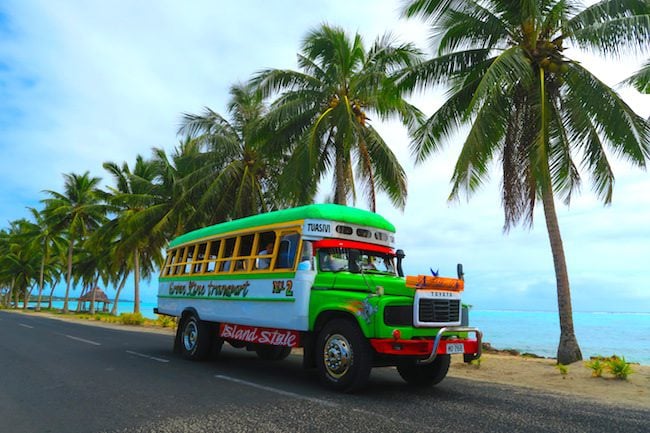
Churches
Savaii’s east coast has a few interesting churches. Just outside Salelologa, a church marks the spot where Samoa’s first missionaries landed. Further up the coast, a massive whitewashed church looks like something out of an old western.
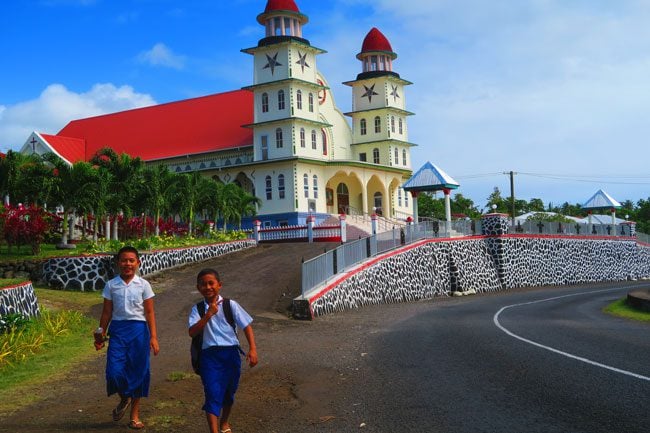

Lano Beach
Lano Beach is one of the prettiest in Savaii. There’s not a whole lot of beach during high tide, but you’ll find lots of cute-looking family-owned beach fales at super low prices. This is a good place to stay if you want to do some beach bumming without venturing too far from the ferry in Salelologa. Have a look at the recommended Savaii Island accommodations for a good place to stay in Lano Beach.
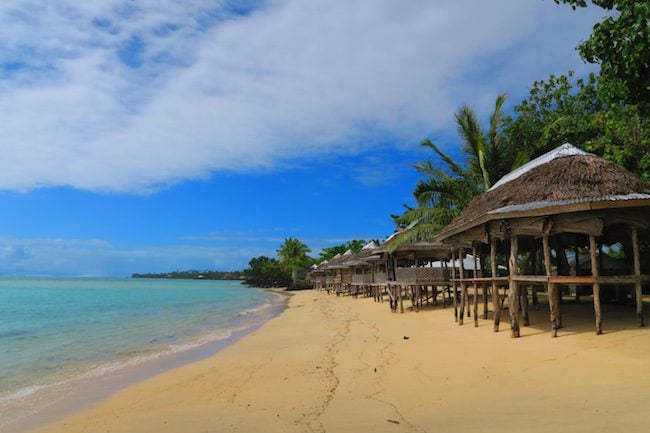
Saleaula Lava Field
Between 1905-1911 the Mount Matavanu Volcano eruptions sent lava flowing down the fertile plain and underground lava tubes towards the coast. Over 70 square kilometers of land were covered by up to 9 meters of lava. Five villages were destroyed but no lives were lost. The eruptions left an eerie scar on Savaii’s northeast coastline. The good news is that this tragic past provides local villagers with one of the top visitor attractions on the island. To get here, look for the sign on the main road and park the car at the visitor’s center. Pay the T5 entry fee and head down the trail. You’re essentially now walking on top of one of the destroyed villages.
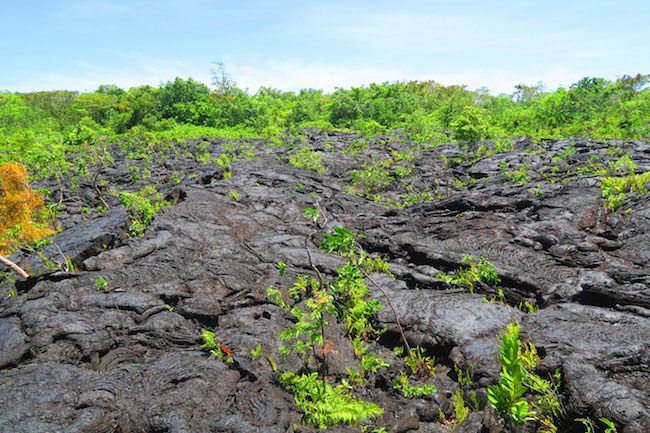
The first stop is the old LMS Church, where the lava literally flowed through its aisles. Continue on the lava field, hopping from one boulder to another until you reach the coastline. On your way back to the visitors center, stop by the Virgin’s Grave. As lava flowed from the volcano, it covered the local cemetery. Local legend tells of the grave of a young virgin that was so holy and pure, that the lava simply flowed around it, creating this strange depression in an otherwise completely covered surface.
Don’t forget a hat and plenty of water as the lava field absorbs much of the sun’s rays.
Savaii North Coast
On the north coast of Savaii, the mountains and the coast tightly hug each other. This part of the island is home to the best beaches and hikes in Savaii.
Swimming With Turtles
Just after the Saleaula Lava Field, you’ll get the chance to swim with sea turtles in an enclosed pool. I personally prefer to swim with turtles in their natural habitat so I opted out, but I did meet other travelers who enjoyed the experience.
Scuba Diving In Savaii
The best scuba diving in Samoa is currently in Manase, where Dive Savaii will take you on a grand tour of the reef. Seeing how snorkeling was on the whole quite disappointing throughout Samoa, I was pleasantly surprised with these dives. The volcanic underwater landscape was a continuation of what you see on dry land, with rocky mounds overgrown with hard coral. We also tightly maneuvered through narrow channels and inside lava tubes, where we sometimes had to do a bit of crawling and where there were often surprises. We even came across an unexplained group of dead fish, probably arriving only seconds after a predator took care of business.
As for the marine life, the only time I saw a lionfish in the South Pacific was right here (and I went diving in Vanuatu, the Cook Islands, and French Polynesia). We also came across stingrays and had lots of close encounters with sea turtles.
An unexpected highlight was the wreck of the John Williams V, a missionary boat that sailed from Apia to Savaii over Christmas and mistakenly crashed into the reef.
Logistics: a two-tank dive will cost ~T260 (extra T20 for mask and fins), snorkelers can join for T60 (same extras) and you can even get your certification here. The dives themselves were not very deep, which meant we were underwater for more than 50 minutes! You should book in advance as outings depend on the tide (closed Sundays and usually on holidays from December – February) Dive Savaii is located in front of Le Lagoto Resort & Spa and right next to Leilina’s Pizza – a refreshing escape to Italy.
Manase Village and Beach
Manase is a 90-minute bus ride from Salelologa and a relatively ‘large’ village in Savaii. It’s the most popular section of the island, with miles of white sand beaches and lots of accommodations to choose from. The village has a couple of shops, an ATM, a dive center, a pizzeria, and a gas station. Other than that, just sit back, relax, and enjoy paradise. There is, however, one activity that’ll keep you busy. This coastline is sort of a ‘sea turtle’ highway and sometimes these cute creatures like to nibble on the seagrass close to shore. So before you move on to the next chapter in your holiday read, glance out at the ocean and try to spot one! Lucky snorkelers can even try to keep up with them underwater.
Mount Matavanu Crater
After you’ve seen the Saleaula Lava Field, why not pay a visit to the cause of the destruction? The challenging drive up to Mount Matavanu Crater is totally worth the effort. En route, you’ll drive through coconut plantations and maybe see an occasional farmer tending the cows or chopping coconuts in the sweltering heat to make copra.
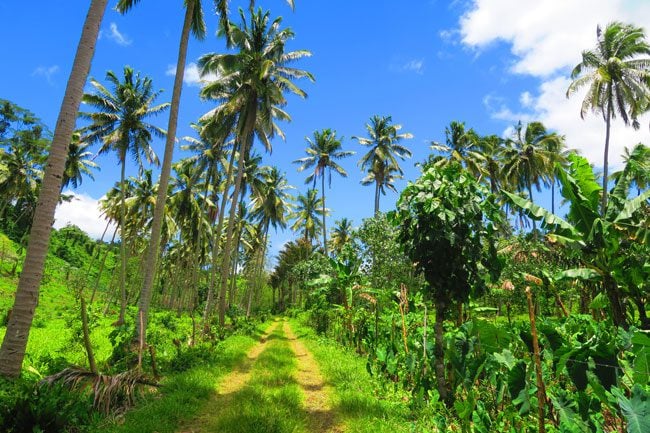
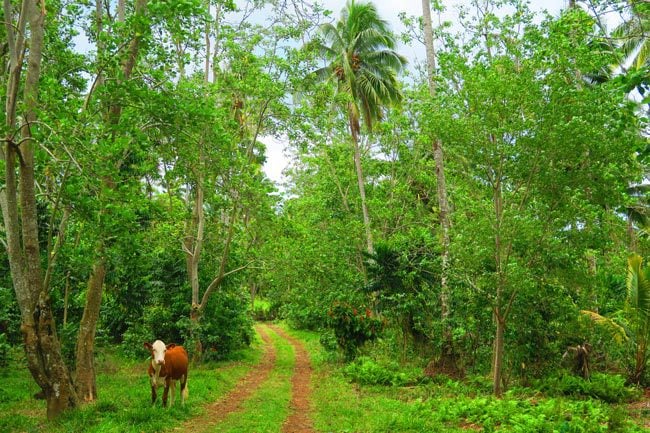
Eventually, you’ll reach a small fale and meet Da Craterman. This friendly guy is a living legend around here, maintaining the grounds and celebrating the visitors who pass through his gates with signs in his own version of the English language (‘cr8ta’ = crater). Hand over T20 to Da Craterman and continue to the upper car park via yet another challenging section of the road.



Up at the car park, it’s just you, the birds, and the blue ocean in the far distance. This is really the definition of ‘off the beaten track’ in Samoa. Just imagine all the lava that came pouring down from right here! An easy twenty-minute signposted hike will bring you the viewing platform just above the crater. It’s an absolute serene spot, so peaceful and a little scary considering the sheer drop with one bad move. Here’s what it looks and sounds like.
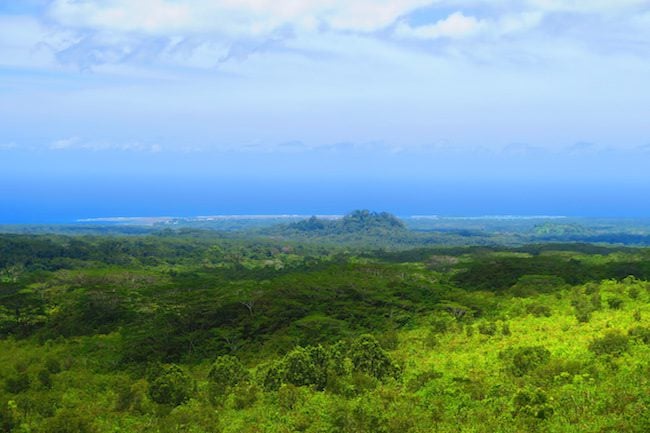
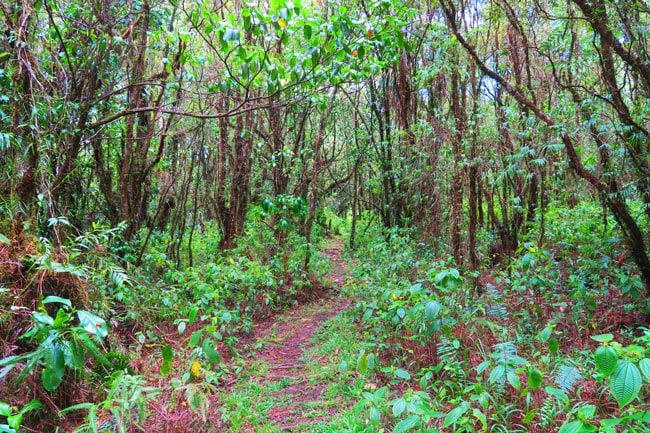
Back in 1905, molten lava rose from the ground like fountains. Eventually, a small cone was formed, collapsing to form the crater we see today. Lava flowed via a dry river bed and via an underground lava tube at the crater’s base. The huge crater is now overgrown with vegetation, but the volcano is still technically active…
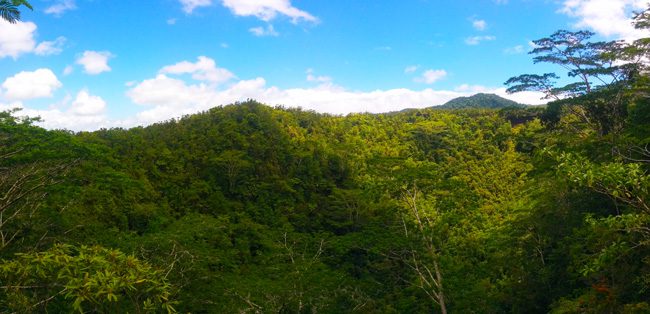
Logistics: look for the sign towards Paia Village and Mount Matavanu. A 4WD will afford a comfortable drive but a high 2WD will do just fine, though expect a very bumpy ride for about 8km. Allow for about 2 hours for the whole affair.
Mataolealelo Spring
Definitely not as grand as the Piula Cave Pool in Upolu, stop at the Mataolealelo Spring to quickly cool off (T5 entrance fee). Though right on the ocean, the spring is fed by water somehow trickling down from the mountains.

Paia Dwarfs Cave
Not visiting this cave was one of my regrets, but you kind of need to have a car to get here and it does take up the bulk of your day. Local guides will lead you through a massively long lava tube, where you’ll get muddy, wet, and at some point just ask to turn back around (T20 entrance fee + guide).
Peapea Cave
In a much smaller lava tube, the Polynesian Swiftlet dwells inside the Peapea Cave. The entrance costs T5 and it’s just off the main road. The local manning the booth will lead you down with a flashlight and point out the nests. It’s a quick stop, no more than 20 minutes.

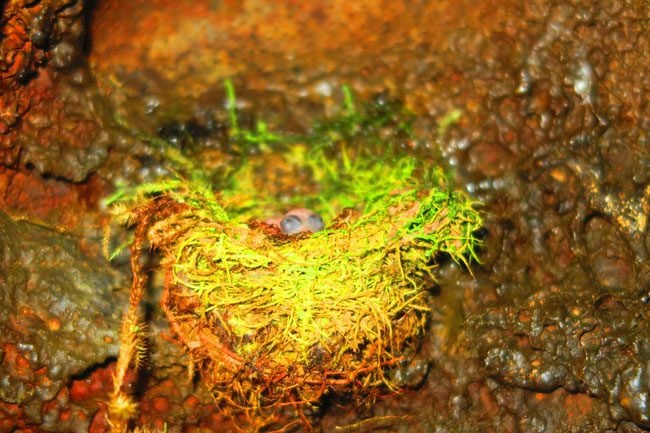
Falealupo Peninsula
We already covered the southern section of this mysterious peninsula with Cape Mulinuu, but there’s still plenty to see in the northern half. The road from the Peapea Cave to Falealupo Village will take you up and down hills and past sleepy villages where absolutely nothing seems to happen.
Follow the signs to the Falealupo Rainforest Preserve and park the car in front of the Canopy Walkway. Pay the entrance fee and walk along the suspension bridge to a wooden viewing area atop a giant banyan tree that resembles the treehouse you’ve always dreamed of having as a child.
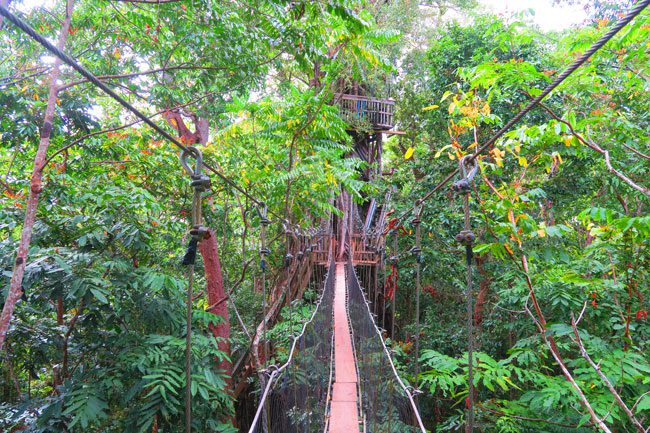
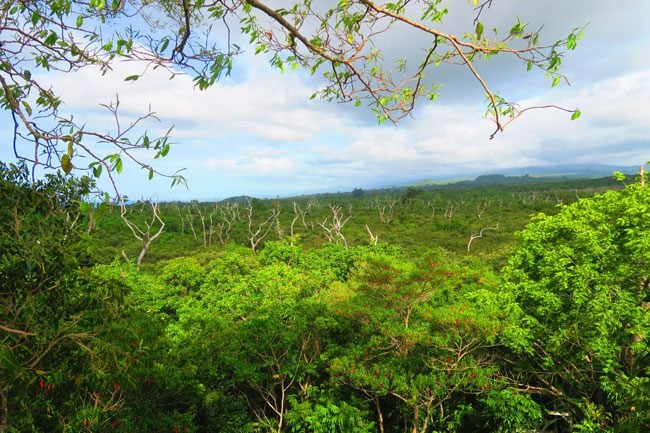
The T20 ticket you pay at the Canopy Walkway is also valid for Moso’s Footprint and the House of Rock, though villagers at these next stops might attempt to get more out of you.
Next up is Moso’s Footprint, an imprint in the lava rock that kind of resembles the foot of a giant. Local legend claims this is the work of Moso, a giant who left his mark when stepping over from Fiji… I don’t have a picture of Moso’s Footprint because the local lady wanted, even more, money than I already paid just to take a photo. Don’t be alarmed, this is how things go in this part of Samoa.
Further up the road, you’ll pass a beautiful empty beach and the original spot of Falealupo Village. The village was relocated to its present spot following the devastating cyclones of 1990 and 1991. Aside from a few families who still live out here in very simple homes, the eerie ruins of the old Catholic church are all that survived (you will be asked for T5 to snap pictures of the church).
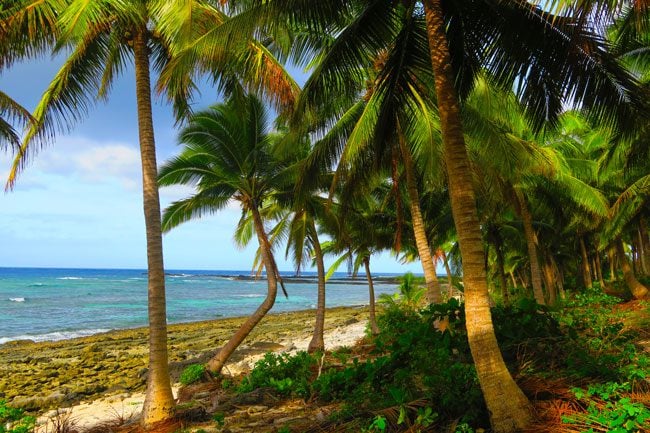

The last stop in the northern section of the Falealupo Peninsula is the House of Rocks. The collapsed lava tube served as a shelter during the cyclones. Legend has it that the cave is actually the result of a house-building competition between the men and women of the village. The women won by the way. The ‘house’ is at the end of a short trail and if you can’t find it, one of the kids living out front will be more than happy to lead the way for T5.
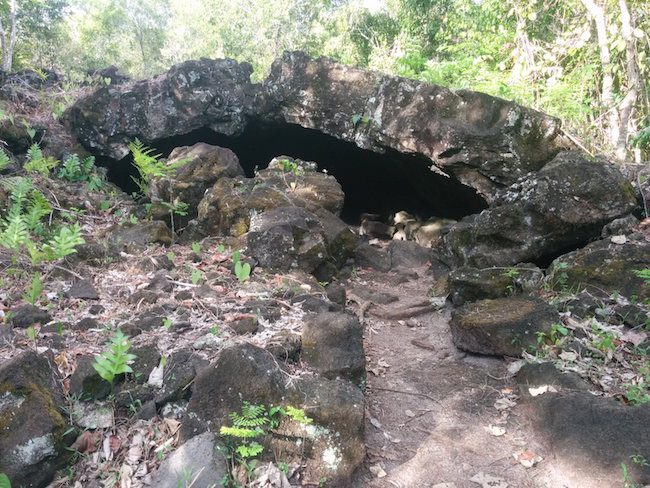
Ready To Visit?
I hope you’ve found this Samoa Travel Guide useful. Check out the Samoa travel guide collection for additional resources, including sample itineraries.



Pin These Images To Your Favorite Pinterest Board
